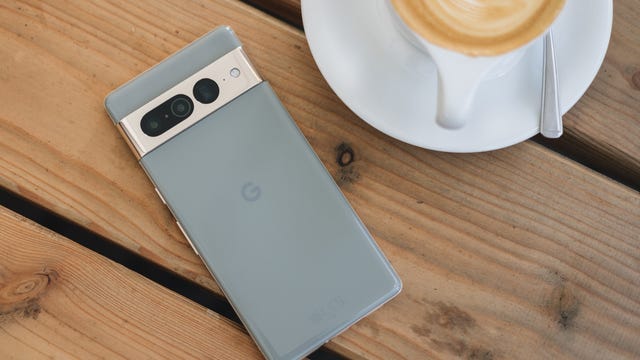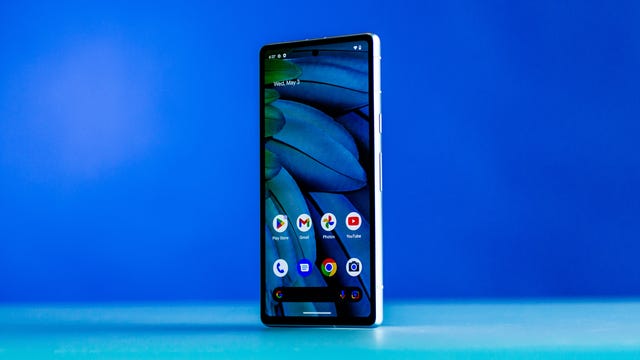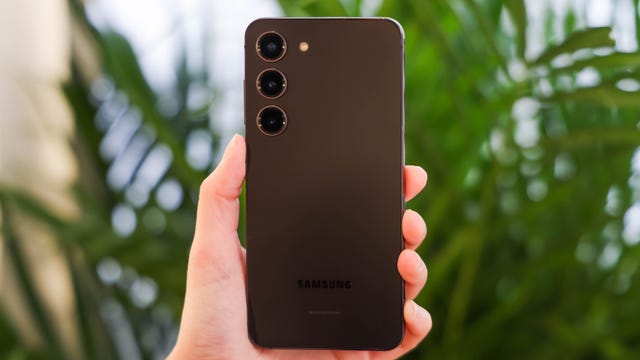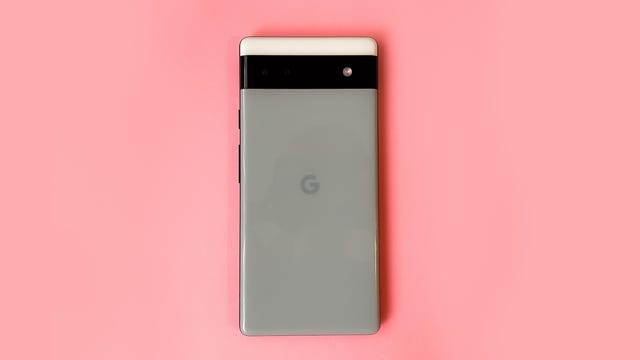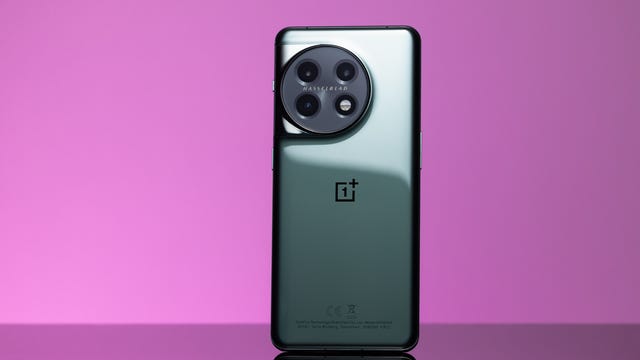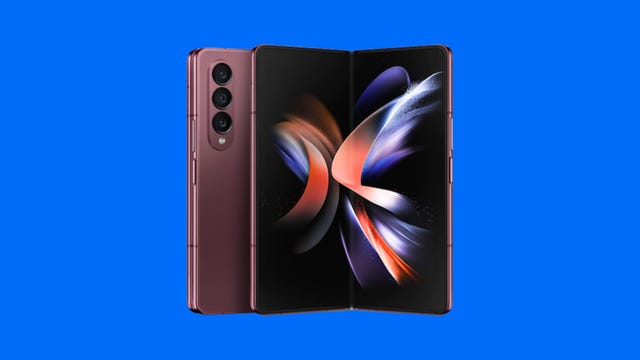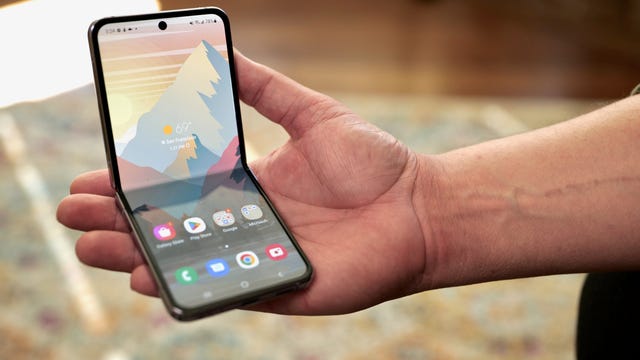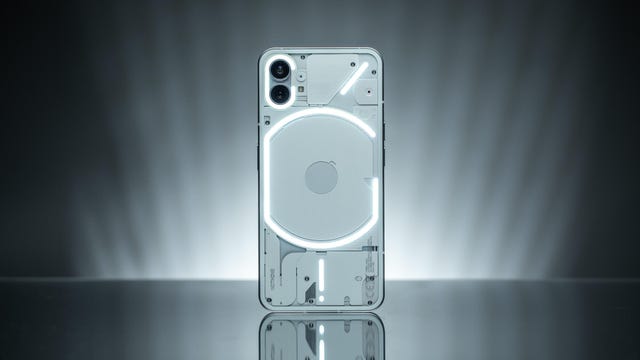Technologies
Best Android Phone of 2023
The Galaxy S23, Pixel 7 Pro and others made our list.

There’s certainly no shortage of choice when it comes to Android phones, whether you prefer Samsung, Google or OnePlus. Android devices come in a wide variety of sizes, shapes and prices, meaning there’s something for everyone. But having so many options also means the buying decision can be difficult. If you aren’t sure where to start, you’re in the right place: We’ve tested and researched all the best Android phones you can buy in 2023.
A great phone should have high-quality cameras, long battery life, compelling software features and 5G support. We considered these factors when putting together our list of the best Android phones in 2023, which you can check out below. CNET’s team updates this list periodically as we review new products.
What is the best Android phone?
The Google Pixel 7 Pro sits at the top of our list of best Android phones, largely because it has some of the best cameras found on any phone sold today and represents one of the best values for your dollar on this list. The Pixel 7 Pro also packs a number of convenient features that are unique to it. There are calling tools like the ability to wait on hold and notify you when a representative becomes available. You can also sharpen old photos that are out of focus to make the subject look clearer. And then there’s the ability to automatically caption videos, podcasts, phone calls and more.
Advertiser Disclosure
There are plenty of other excellent choices out there, however, even though the Pixel 7 Pro is our current favorite.
Best Android phones of 2023
Like:
• Refreshed design looks great
• Superb cameras
• Clean and enjoyable interface
Don’t like:
• Battery life could be better
Google’s latest flagship phone, the Pixel 7 Pro, isn’t a huge overhaul from the already excellent Pixel 6 Pro Google launched last year. But it’s taken that winning formula and made some key tweaks to almost every element, resulting in a superb phone that’s bliss to use. The refreshed camera can take stunning images too, earning its spot among the best flagship phones around. It typically sells for $899, but Google currently has it on sale for $150 off.
Like:
- Fast performance
- Excellent main camera
- Bright screen
- Included stylus
- Double the storage in the base model
- Four generations of Android OS updates
Don’t like:
- High price
- Photos don’t always look natural
- No improvements to fast charging
The Galaxy S23 is a lot, but in a good way. It’s more than most people need in a phone, but that doesn’t make it any less impressive. Samsung made improvements to the camera’s resolution (200 megapixels compared with 108 megapixels), color tones and dynamic range, while retaining the same edgy design and massive 6.8-inch screen as its predecessor. There’s also a new Qualcomm Snapdragon 8 Gen 2 processor that’s been optimized specifically for Samsung’s phones, which brings faster performance compared with the Galaxy S22 Ultra.
It may be an understatement to call this phone expensive: It starts at $1,200. But people willing to pay more for a giant screen and a high-quality, versatile camera won’t be disappointed. Read our Samsung Galaxy S23 Ultra review.
Like:
- Excellent camera
- Many of the same features as the Pixel 7 at a cheaper price
- Attractive design
- Gains wireless charging, face unlock and high refresh rate
Don’t like:
- Screen still looks dim outdoors
- Higher price compared with Pixel 6A at launch
- Only three generations of Android OS updates compared with Samsung’s four-generation pledge
Google’s budget phone took a leap forward in 2023 with the Pixel 7A, which offers many of the same benefits as the Pixel 7 but at a cheaper price. Like the Pixel 7, the Pixel 7A runs on Google’s Tensor G2 processor, meaning it has many of the same photo editing and language translation features as its pricier sibling. The Pixel 7A’s 64-megapixel camera also takes excellent photos that rival the Pixel 7’s in quality.
While we still like the Pixel 7, the Pixel 7A’s lower price makes it a better deal for most people. Only opt for the Pixel 7 if you really want a slightly larger screen and are willing to pay the extra $100 for it. Otherwise, the main differences between the Pixel 7 and 7A come down to the former’s more durable build, slightly faster charging and its ability to wirelessly charge compatible accessories. The Pixel 7 also has a larger camera sensor that’s more sensitive to light, according to Google, but CNET’s Lisa Eadicicco didn’t notice much of a difference.
Like:
- Longer battery life
- Attractive design
- Four generations of Android OS updates
- Fast performance
Don’t like:
- Cameras are basically the same as last year
- Expensive
- No improvements to fast charging
- No upgrade to base storage
Android fans looking for a petite phone don’t have much to choose from. But the 6.1-inch Galaxy S23 provides a compelling option for those who want a phone that feels compact but still provides enough screen space. The Galaxy S23 comes with routine upgrades like a fresh processor (a version of Qualcomm’s Snapdragon 8 Gen 2 that’s been optimized for Samsung’s phones), a slightly new design and a higher-resolution selfie camera. But it’s the Galaxy S23’s larger battery that makes it worth recommending. Read our Samsung Galaxy S23 review.
Like:
- Nice screen
- Speedy performance
- IP67 water-resistant
- Affordable price
Don’t like:
- No wireless charging
The Pixel 6A is a solid choice if you want 5G and a great camera on the cheap, especially at its new $349 price. This Pixel phone has the same Tensor chip that powers the Pixel 6, great rear cameras with many of Google’s shooting and editing tools, a 6.1-inch display and average battery life. At this price, it’s the best value you can get from an Android phone right now.
Like:
- Incredible performance for gaming
- Slick, refreshed design
- Hyper-fast charging
- Five years of security support
Don’t like:
- Cameras are good but not great
- Better waterproofing on rivals
The $700 OnePlus 11 is a powerful phone that’s well equipped to handle gaming, video streaming and other common tasks. In typical OnePlus fashion, this phone is also cheaper than the $800 Galaxy S23 and $900 Pixel 7 Pro. The cameras aren’t the best, but they’re fine for casual photographers who just want to capture their next vacation or a night out. What sets the OnePlus 11 apart from many of its rivals is its blazing 100-watt fast charging, which can replenish the battery in just 25 minutes. (The US version only supports 80-watt charging, but that’s still an improvement over the Galaxy S23 Ultra’s 45-watt charging). Overall, the OnePlus 11 is ideal for people who want a powerful phone that charges quickly and won’t break the bank. Read our full review of the OnePlus 11.
Like:
- 120Hz cover screen
- Water resistance
- Enhanced tablet experience
- Software improvements for multitasking and Flex Mode
Don’t like:
- $1,800 is still expensive
Foldable phones haven’t really hit the mainstream, remaining instead only in the reach of those willing to spend top dollar on the latest in mobile innovation. Samsung’s Galaxy Z Fold 4 is the best folding phone around, offering top-notch performance, a great camera setup and a variety of tweaks to its folding technology that make this Android smartphone more desirable than its predecessor. Just keep in mind that Google will be launching the Pixel Fold shortly, and Samsung typically releases new foldable phones around the August timeframe.
Like:
- Fun, foldable design
- High refresh-rate screen looks good
- Main camera takes good photos in medium and low light
Don’t like:
- Cover screen needs more functionality
- Battery barely gets through a day
- Ultrawide and selfie cameras are just average
- Price is high
Samsung’s $1,000 Galaxy Z Flip 4 is the most portable and fun phone CNET’s Patrick Holland reviewed last year. It inherits the best parts of the Z Flip 3, like its pocketable flip phone-inspired design and Flex Mode, which makes it easier to use the phone when it’s propped open halfway. The Z Flip 4 also has a new image sensor, which improves image quality compared to the Flip 3, along with a bigger battery and newer processor.
These improvements address some of the Z Flip 3’s biggest shortcomings, even though Samsung didn’t give us everything we wanted (like a larger cover screen). But all told, the Galaxy Z Flip 4 is a great choice for those who want a phone that’s more portable than almost anything else you’ll find on the market.
Samsung also lowered Z Flip 3’s price when introducing the Z Flip 4 last year. For that reason, we previously recommended the Z Flip 3 over the Z Flip 4 since they share many similarities. But now that the Z Flip 3 is almost two years old, it’s a wise idea to invest in newer technology that will last longer if possible. That’s especially true if you can score a good trade-in deal on the Z Flip 4.
Like:
- Professional level video monitor features
- Robust utilitarian build
- Live broadcast streaming over 5G
- As a phone, it’s essentially the Sony Xperia 1 II
Don’t like:
- Price is high, limiting its narrow appeal
- 2020 specs and Android 10
- Can’t record video via HDMI input
At a whopping $1,800 list price, the Sony Xperia Pro isn’t for everyone. But if you’re a photographer or videographer looking for professional-level camera phone features, you can’t go wrong. The Xperia Pro is essentially four products in one: a phone, a camera monitor, a speedy photo file transfer device and a 5G machine suitable for broadcasting and livestreaming.
Like:
• Flashing design
• Solid performance
• Affordable price
Don’t like:
• Cameras are only OK
• Not widely available in the US
The Nothing Phone 1’s affordable price, solid performance and good-enough camera setup already make it a solid option to consider if you’re looking for an Android phone on a budget. But this phone takes the pizzazz up a notch with its suite of flashing LED lights on the rear, which certainly make it stand out against its competitors.
It’s a great phone, which we enjoyed reviewing, but there is a downside: As of right now, there aren’t any plans to launch the phone widely in the US. You can get it unlocked on Amazon, but it’s GSM-only so it won’t work on Verizon. The company’s next phone, the Nothing Phone 2, will be coming to the US later this year.
How we test phones
Every phone on this list has been thoroughly tested by CNET’s expert reviews team. We actually use the phone, test the features, play games and take photos. We assess any marketing promises that a company makes about its phones. And if we find something we don’t like, be it battery life or build quality, we tell you all about it.
We examine every aspect of a phone during testing:
- Display
- Design and feel
- Processor performance
- Battery life
- Camera quality
- Features
We test all of a phone’s cameras (both front and back) in a variety of conditions: from outdoors under sunlight to dimmer indoor locales and night time scenes (for any available night modes). We also compare our findings against similarly priced models. We have a series of real-world battery tests to see how long a phone lasts under everyday use.
We take into account additional phone features like 5G, fingerprint and face readers, styluses, fast charging, foldable displays and other useful extras. And we weigh all of our experiences and testing against the price so you know whether a phone represents good value or not.
Read more: How We Test Phones
Phone FAQs
How reliable is an Android phone?
Android phones come in all shapes and sizes. Prices range from just a couple hundred dollars for a basic smartphone to $1,800 for state-of-the-art foldable phones. All the phones on this list are durable, have an IP rating for water and dust resistance and years of software support.
How long does an Android phone last?
While every phone on this list varies in how many years of software support you get and how long you can extend the warranty, most should last you a few years if not more.
More phone and Android recommendations
Technologies
Xbox Set to Bring Resident Evil, Star Wars and More to Xbox Game Pass
Subscribers can play several other games, including the original Final Fantasy in all its 2D glory, on Game Pass in January.

Resident Evil Requiem, the ninth game in the main Resident Evil series, is set to be released on Feb. 26. Xbox Game Pass subscribers can prepare for Requiem by playing Resident Evil Village, the most recent entry in the series, starting on Jan. 20.
Xbox Game Pass offers hundreds of games you can play on your Xbox Series X, Xbox Series S, Xbox One, Amazon Fire TV, smart TV and PC or mobile device, with prices starting at $10 a month. While all Game Pass tiers offer you a library of games, Game Pass Ultimate ($30 a month) gives you access to the most games, as well as Day 1 games, like Call of Duty: Black Ops 7, added monthly.
Here are all the games subscribers can play on Game Pass soon. You can also check out other games the company added to the service in December, including Marvel Cosmic Invasion.
Note: «Handheld» means a game is optimized for handheld play.
Don’t miss any of our unbiased tech content and lab-based reviews. Add CNET as a preferred Google source.
Brews & Bastards (cloud, PC and Xbox Series X/S)
Game Pass Ultimate, Game Pass Premium and PC Game Pass subscribers can play now.
What’s a hero gotta do to get a drink around here? Choose an inebriated hero to travel deep under a tavern in search of the stolen Brew Stone. You’ll explore tavern-themed dungeons and use bar-inspired weapons, like high-caliber champagne bottles, to blast through drunken demons and other boozy monsters. And if you’ve ever called one of your exes a drunken demon, maybe this game will be a little cathartic for you.
Little Nightmares Enhanced Edition (cloud, handheld, PC and Xbox Series X/S)
Game Pass Ultimate, Game Pass Premium and PC Game Pass subscribers can play now.
Little Nightmares is back in high-quality 4K and 60 frames per second in this enhanced edition of the dark tale. You play as a lone child trapped in a massive world inhabited by monstrous versions of adults called the Maw. All you can do is run from these creatures, but you’ll also have to sneak and hide to throw them off your trail if you want to survive.
Atomfall (cloud, console, handheld and PC)
New to Game Pass Premium. Previously on Game Pass Ultimate and PC Game Pass.
The Windscale fire was the worst nuclear disaster in the UK’s history, and it’s estimated that it caused between 100 and 240 cancer-related deaths. Atomfall asks, «What if Windscale was similar in magnitude to the disaster at Chornobyl?»
This game takes place five years after a far more devastating Windscale disaster. You’ll encounter gangs of bandits, cults and rogue government agencies throughout the quarantine zone in the beautiful Lake District, in northern England. It’s up to you whether you avoid conflict or charge into the heat of battle, but resources are scarce, so maybe don’t go in guns blazing every chance you get.
Lost in Random: The Eternal Die (cloud, Xbox Series X/S, handheld and PC)
New to Game Pass Premium. Previously on Game Pass Ultimate and PC Game Pass.
You’re the once-great ruler of Random, Queen Aleksandra, and you’re on a mission of vengeance and redemption in this fast-paced rogue-like game. You’ll fight monsters and beasts with four unique weapons, plus powerful card-based abilities and relics. But death isn’t final here, so if you fall, you’ll return to Sanctuary to rearm, upgrade and prepare for your next run.
Rematch (cloud, PC and Xbox Series X/S)
New to Game Pass Premium. Previously on Game Pass Ultimate and PC Game Pass.
Tackle, dribble and score in this team-based football game (or soccer, depending on your locale). This game was designed for 5v5 online multiplayer matches where players control a single athlete. That means you’ll have to coordinate and plan with the rest of your co-op teammates if you want to win. And with no player stats to give one person an advantage over another, coordination is the key to success.
Warhammer 40,000: Space Marine – Master Crafted Edition (cloud, PC and Xbox Series X/S)
New to Game Pass Premium. Previously on Game Pass Ultimate and PC Game Pass.
You are Capt. Demetrian Titus, an Ultramarine in the Imperium of Man tens of thousands of years from now, and it’s up to you and your squad to help reclaim the Forge World Graia from an Ork horde. Originally released in 2011, this third-person shooter has been remastered for modern consoles with enhanced character models, a modernized control scheme and more. So grab your chainsword and bolter and get ready to fight. For the Emperor!
Final Fantasy (cloud, Xbox Series X/S and PC)
Game Pass Ultimate, Game Pass Premium and PC Game Pass subscribers can play on Jan. 8.
This is the game that started it all. Join the Warriors of Light on a journey to restore power to the Crystals and save their home world. The remastered version of this game introduces enhanced gameplay features, including auto-battle and more, to your screen.
Star Wars Outlaws (cloud, PC and Xbox Series X/S)
Game Pass Ultimate and PC Game Pass subscribers can play on Jan. 13.
Luke Skywalker and the Jedis are cool and all, but who didn’t want to be a cool smuggler like Han Solo? This open-world Star Wars game lets you become just that. You play as Kay Vess, a scoundrel looking for freedom and a new life. You’ll fight, steal and outsmart crime syndicates from around the galaxy. But the Empire is out there, too, so watch your back.
My Little Pony: A Zephyr Heights Mystery (cloud, console, handheld and PC)
Game Pass Ultimate, Game Pass Premium and PC Game Pass subscribers can play on Jan. 15.
Go on an adventure with Sunny, Hitch, Izzy, Pipp, Zipp and Misty as you try to solve a mystery together. Strange music is turning the world upside down, and it’s up to you and your friends to use your powers to put a stop to the music.
Resident Evil Village (cloud, console and PC)
Game Pass Ultimate, Game Pass Premium, PC Game Pass subscribers can play on Jan. 20.
The latest entry in the mainline Resident Evil series puts you back in the shoes of Ethan Winters as he ventures into a haunting European village in search of his abducted daughter. You’ll fight lycans, vampires and other monstrous creatures as you try to uncover why your daughter was taken and your wife was murdered.
MIO: Memories in Orbit (cloud, handheld, PC and Xbox Series X/S)
Game Pass Ultimate, PC Game Pass subscribers can play on Jan. 20.
Get ready to explore a treacherous ship in this sci-fi metroidvania game. You play as Mio, a nimble android who wakes up in the Vessel, a spaceship drifting aimlessly through the stars. The ship’s machines have gone rogue, and vegetation has taken over parts of the Vessel. It’s up to you to figure out what happened to the Vessel and the ship’s purpose.
Games leaving Xbox Game Pass on Jan. 15
While Microsoft is bringing those games to different Game Pass tiers this month, the company is also removing these games from the service on Jan. 15. So, you still have some time to complete your campaign or any sidequests before you have to purchase these games separately.
For more on Xbox, discover other games available on Game Pass now and check out our hands-on review of the gaming service. You can also learn about recent changes to the Game Pass service.
Technologies
We’ve Found the Coolest, Most Futuristic Tech at CES 2026. And the Show Just Started
We’ve already had a day to trawl for our favorite cutting-edge technology. Neat stuff abounds!

We have people all over the show floor and beyond at CES, searching for the most interesting, innovative and cutting-edge tech available. A ton of useful new information is also available, which you can find on our CES 2026 live blog and in our CES hub.
The show floor opened Tuesday, and we had a lot of preview time beforehand to gawk at some CES staples, such as robots, electronic toys, phones and more. I’ll be back here to top off our fun finds regularly throughout the show.
Technologies
Grab This Tariff-Busting Xbox Series X Deal and Save $44 While You Can
You can bag a 1TB Xbox Series X for just $606, but act fast, since we don’t know how long this deal will last.
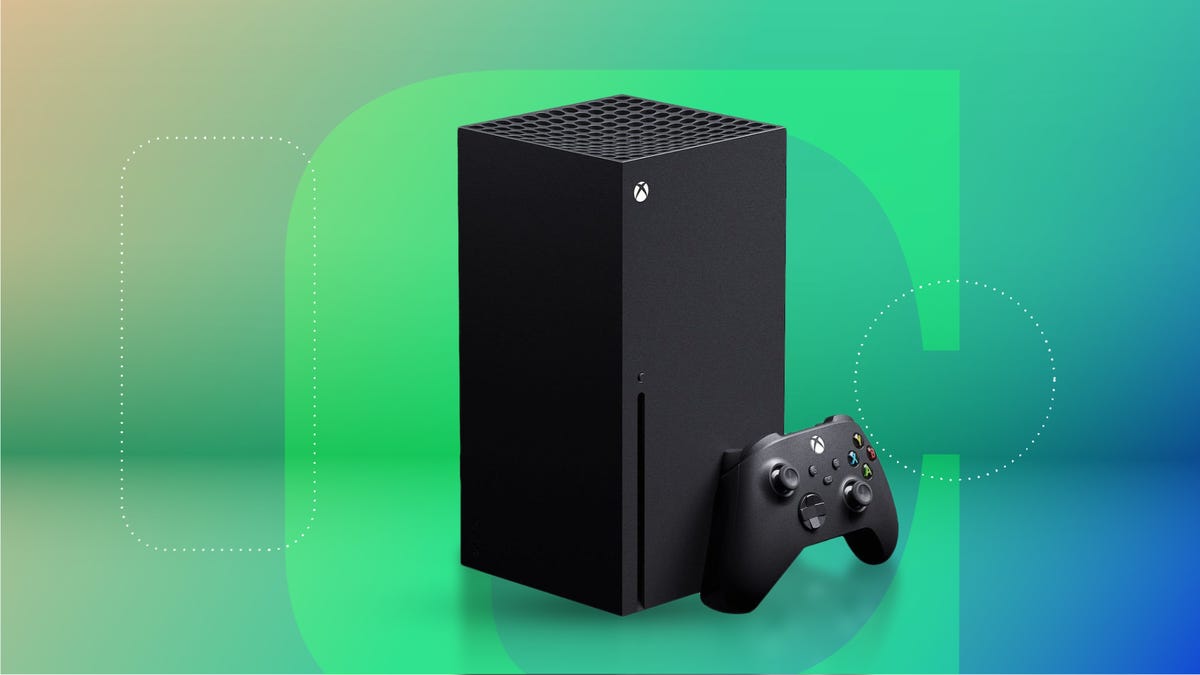
Ever since tariffs and other economic uncertainty led to Xbox price increases in late 2025, things have gotten expensive. A 1TB Xbox Series X now sells for $50 more than it used to, and there is little sign of these prices improving anytime soon.
Thankfully, every so often, a deal pops up that helps make things a little more affordable like this Walmart discount that slashes that same Series X to just $606. The catch? Well, there isn’t one. But we don’t expect this deal to last for long, so make sure to get your order in soon before it leaves for good.
The Xbox Series X has been around for a while now, so there are no surprises with what you get in the box. The Series X comes with a 1TB SSD for storage, and you get a controller in the box. This version also has a disc drive for installing games and watching Blu-ray movies, too.
Hey, did you know? CNET Deals texts are free, easy and save you money.
You can look forward to watching 4K content and playing 4K games, as well as enjoying audio options such as Dolby Digital, Dolby TrueHD and DTS. All of that makes this a capable machine, whether you want to watch content or play games.
CHEAP GAMING LAPTOP DEALS OF THE WEEK
Why this deal matters
It’s unlikely that Xbox prices will get any cheaper anytime soon, so deals like this are the best we can expect for a while now. If you’re in the market for an Xbox and have the $604 to spare, then this is probably the time to place your order before it’s too late.
-

 Technologies3 года ago
Technologies3 года agoTech Companies Need to Be Held Accountable for Security, Experts Say
-

 Technologies3 года ago
Technologies3 года agoBest Handheld Game Console in 2023
-

 Technologies3 года ago
Technologies3 года agoTighten Up Your VR Game With the Best Head Straps for Quest 2
-

 Technologies4 года ago
Technologies4 года agoBlack Friday 2021: The best deals on TVs, headphones, kitchenware, and more
-

 Technologies4 года ago
Technologies4 года agoGoogle to require vaccinations as Silicon Valley rethinks return-to-office policies
-

 Technologies4 года ago
Technologies4 года agoVerum, Wickr and Threema: next generation secured messengers
-

 Technologies4 года ago
Technologies4 года agoOlivia Harlan Dekker for Verum Messenger
-

 Technologies4 года ago
Technologies4 года agoiPhone 13 event: How to watch Apple’s big announcement tomorrow

